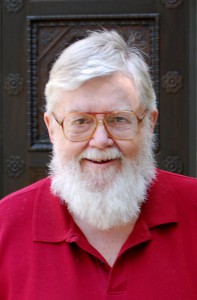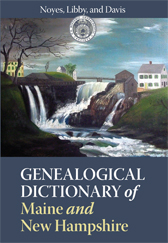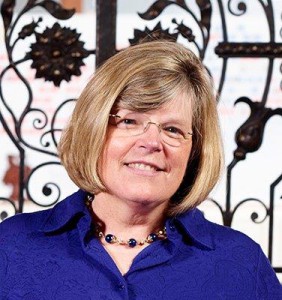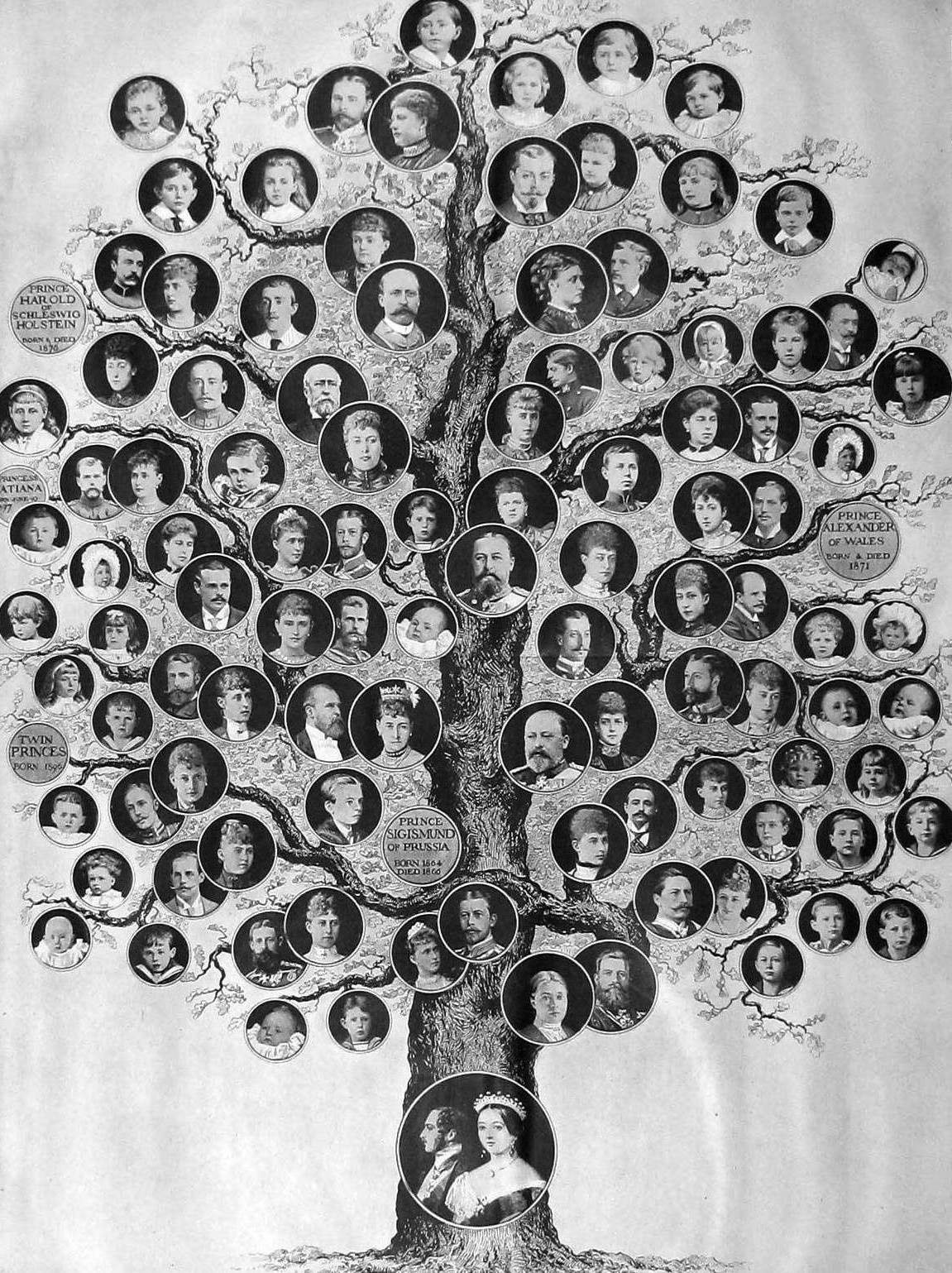 It is just a little over a year since NEHGS President and CEO Brenton Simons came to me with the idea for what became the Early New England Families Study Project. I was immediately interested, not only because it is an important institutional project, but because it brought me full circle to my beginnings in genealogy. My first job with NEHGS in the 1970s was to create a bibliography for Clarence Almon Torrey’s manuscript “New England Marriages Prior to 1700.” It took a number of years, with the help of colleague Peter Drummey, to compare Torrey’s short citations to the books in the library and decide which belonged to which. It was an unparalleled education in genealogical literature! Continue reading The first year of the Early New England Families Study Project
It is just a little over a year since NEHGS President and CEO Brenton Simons came to me with the idea for what became the Early New England Families Study Project. I was immediately interested, not only because it is an important institutional project, but because it brought me full circle to my beginnings in genealogy. My first job with NEHGS in the 1970s was to create a bibliography for Clarence Almon Torrey’s manuscript “New England Marriages Prior to 1700.” It took a number of years, with the help of colleague Peter Drummey, to compare Torrey’s short citations to the books in the library and decide which belonged to which. It was an unparalleled education in genealogical literature! Continue reading The first year of the Early New England Families Study Project
Category Archives: Family Stories
Musings on seventeenth-century Puritans
 Lately, I have been reading Tom Webster’s Godly Clergy in Early Stuart England: The Caroline Puritan Movement, c.1620-1643. Much of this volume is built around Thomas Hooker’s time in Chelmsford, Essex, in the late 1620s. One of my goals is to document in detail and with precision these years in Hooker’s life, a period in which he was lecturer at Chelmsford, school teacher at Great Baddow, and a leading influence on the development of young ministers of Puritan inclinations in East Anglia.
Lately, I have been reading Tom Webster’s Godly Clergy in Early Stuart England: The Caroline Puritan Movement, c.1620-1643. Much of this volume is built around Thomas Hooker’s time in Chelmsford, Essex, in the late 1620s. One of my goals is to document in detail and with precision these years in Hooker’s life, a period in which he was lecturer at Chelmsford, school teacher at Great Baddow, and a leading influence on the development of young ministers of Puritan inclinations in East Anglia.
Much has been written about Hooker at this stage of his life, some of it from Cotton Mather’s Magnalia Christi Americana, not the most reliable of sources. Modern historians make repeated reference to the “household seminary” run by Hooker, and I am concerned that this aspect of Hooker’s career has been distorted by the way Mather presented his information. A fair portion of my research trip to England in the fall will be devoted to collecting copies of all the original sources for Hooker’s life in Essex, and reading Webster’s book is part of the preparation for that research. Continue reading Musings on seventeenth-century Puritans
An answer – and more questions

As a follow-up to my first post at Vita Brevis, back in early January, I am happy to report that a likely photograph of my great-grandfather Edward Hughes Glidden (1873-1924) has surfaced – but, initially (and tantalizingly), an accident to the glass plate meant that his face was obscured.
The caption for the photograph reads ”1920. Man in Overcoat walking by Homewood Apartments. Man could be Lt. Glidden, architect and resident of Homewood apts.” on North Charles Street in Baltimore. According to the collection’s online catalogue, the captioner provided the identification for the photograph’s subject, and I wonder if the original notation was for E. H. Glidden, the name he most often used professionally. Continue reading An answer – and more questions
Something else inventories can tell us
 My winter social schedule was enlivened recently with a talk given by one of my favorite speakers, Peg Baker of Plymouth. She and her husband, Jim Baker, are well known for their vast expertise in all things Pilgrim. Peg is Director Emeritus of The Pilgrim Society in Plymouth and compiler of the just released and completely revised edition of Mayflower Families Through Five Generations on Pilgrim Thomas Rogers, published by the General Society of Mayflower Descendants. Continue reading Something else inventories can tell us
My winter social schedule was enlivened recently with a talk given by one of my favorite speakers, Peg Baker of Plymouth. She and her husband, Jim Baker, are well known for their vast expertise in all things Pilgrim. Peg is Director Emeritus of The Pilgrim Society in Plymouth and compiler of the just released and completely revised edition of Mayflower Families Through Five Generations on Pilgrim Thomas Rogers, published by the General Society of Mayflower Descendants. Continue reading Something else inventories can tell us
A triumph of genealogical scholarship
 For more than seventy years the Genealogical Dictionary of Maine and New Hampshire – compiled by Charles Thornton Libby, Walter Goodwin Davis, and Sybil Noyes, and published between 1928 and 1938 – has been the first recourse for those looking to trace their seventeenth-century northern New England ancestry. It is one of a handful of titles in the genealogical field that has never been out of print for very long. Continue reading A triumph of genealogical scholarship
For more than seventy years the Genealogical Dictionary of Maine and New Hampshire – compiled by Charles Thornton Libby, Walter Goodwin Davis, and Sybil Noyes, and published between 1928 and 1938 – has been the first recourse for those looking to trace their seventeenth-century northern New England ancestry. It is one of a handful of titles in the genealogical field that has never been out of print for very long. Continue reading A triumph of genealogical scholarship
Some light reading material
 In his 1693 will, Richard Martyn of Portsmouth, New Hampshire, directed that all the books his third wife “brought with her to my house” be returned to her. Curiosity sent me off on a tangent (it doesn’t take much to distract me) to see if I could identify those books or where she got them. Mrs. Martyn was Elizabeth (Sherborn) (Langdon) (Lear) Martyn, daughter of Henry Sherborn and previously wife of Tobias Langdon and Tobias Lear. So far, the answer eludes me, but I did find some interesting collateral information in the process. Continue reading Some light reading material
In his 1693 will, Richard Martyn of Portsmouth, New Hampshire, directed that all the books his third wife “brought with her to my house” be returned to her. Curiosity sent me off on a tangent (it doesn’t take much to distract me) to see if I could identify those books or where she got them. Mrs. Martyn was Elizabeth (Sherborn) (Langdon) (Lear) Martyn, daughter of Henry Sherborn and previously wife of Tobias Langdon and Tobias Lear. So far, the answer eludes me, but I did find some interesting collateral information in the process. Continue reading Some light reading material
Queen Victoria’s family tree
NEHGS recently bought a luxuriant “genealogical tree” chart* of Queen Victoria and her descendants, published for the Queen’s Diamond Jubilee in June 1897. The chart, removed from the issue of The Graphic dated 26 June 1897, was at one time in the collection of the West Ham (Surrey) Public Libraries.
What makes the chart unusually interesting is both the extent of the Queen’s family in 1897, and the fact that almost every family member was illustrated – three of the blanks are for children who died in infancy, including Prince Alexander of Wales, the youngest son of the then-Prince and Princess of Wales. Another blank is for “Princess” Tatiana, the new-born daughter of the Emperor and Empress of Russia, who would perish with her parents and siblings at Yekaterinburg in 1918. Continue reading Queen Victoria’s family tree
Mourning rings as genealogical clues
 What to us might seem a rather morbid seventeenth-century tradition was the bestowal of mourning gifts on those who took part in your funeral, such as the coffin bearers, as well as family and friends. Samuel Sewall made a list of thirty funerals at which he was a “bearer” between 1697 and 1704, noting what he received for each service, which totaled twenty-four scarves, five pairs of gloves, and fourteen rings. (For the funeral of Thomas Broughton he got nothing.) By 1725, he had fifty-seven rings. Continue reading Mourning rings as genealogical clues
What to us might seem a rather morbid seventeenth-century tradition was the bestowal of mourning gifts on those who took part in your funeral, such as the coffin bearers, as well as family and friends. Samuel Sewall made a list of thirty funerals at which he was a “bearer” between 1697 and 1704, noting what he received for each service, which totaled twenty-four scarves, five pairs of gloves, and fourteen rings. (For the funeral of Thomas Broughton he got nothing.) By 1725, he had fifty-seven rings. Continue reading Mourning rings as genealogical clues
Beasts, Bees, and Indian Corn
 Probate inventories can tell us a lot about the living conditions of our ancestors, but as they are usually difficult to read and interpret, more often than not the little details are skipped by family historians. Nearly everyone records the amount of land in the inventory, but that rarely tells us much about how good the land was, nor how good the farmer was. Because I’m an old aggie student (University of Connecticut 1969), I like to look at the inventories of livestock and crops to learn more about the farms and their owners. Continue reading Beasts, Bees, and Indian Corn
Probate inventories can tell us a lot about the living conditions of our ancestors, but as they are usually difficult to read and interpret, more often than not the little details are skipped by family historians. Nearly everyone records the amount of land in the inventory, but that rarely tells us much about how good the land was, nor how good the farmer was. Because I’m an old aggie student (University of Connecticut 1969), I like to look at the inventories of livestock and crops to learn more about the farms and their owners. Continue reading Beasts, Bees, and Indian Corn
What you know (and can prove)
 “Write down what you know” is the first step in family history research. For many of us, what we know includes family stories that have been passed down from generation to generation. But sometimes those stories can be misleading – or just plain incorrect. For example, my stepmother had always heard that she was related to Ralph Waldo Emerson and General William Tecumseh Sherman. I have a set of notes written by her aunt, Minerva McGee (1897-1972), which begin like this:
“Write down what you know” is the first step in family history research. For many of us, what we know includes family stories that have been passed down from generation to generation. But sometimes those stories can be misleading – or just plain incorrect. For example, my stepmother had always heard that she was related to Ralph Waldo Emerson and General William Tecumseh Sherman. I have a set of notes written by her aunt, Minerva McGee (1897-1972), which begin like this:
General Sherman — younger brother of Catherine Sherman
Ralph Waldo Emerson — younger brother of John Emerson
John Emerson — Catherine Sherman, My Great Grandparents.
Unfortunately, Aunt Minerva was wrong. Continue reading What you know (and can prove)
